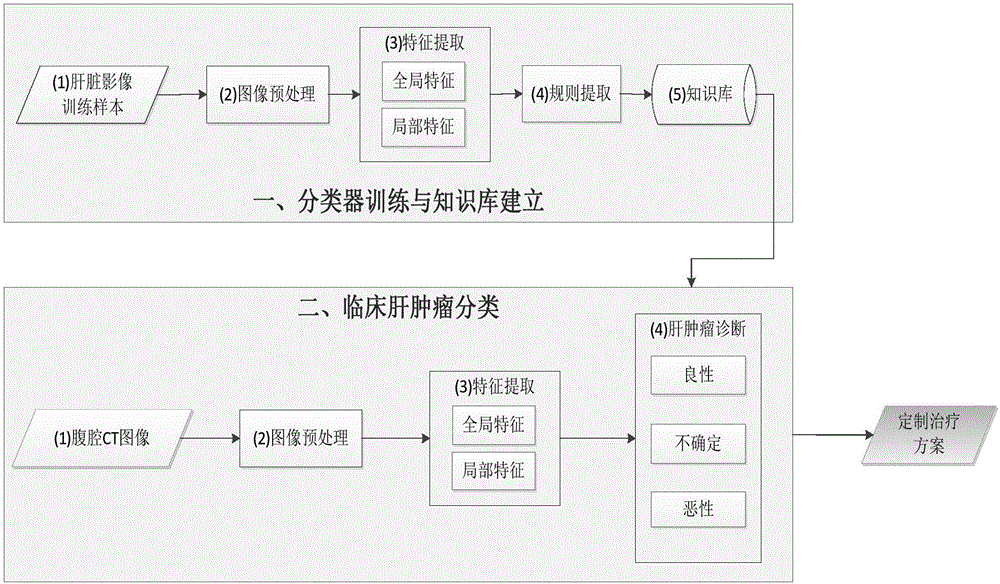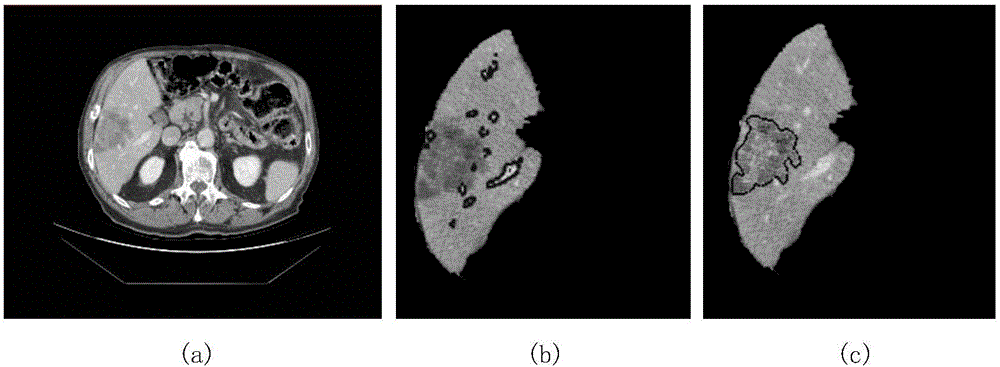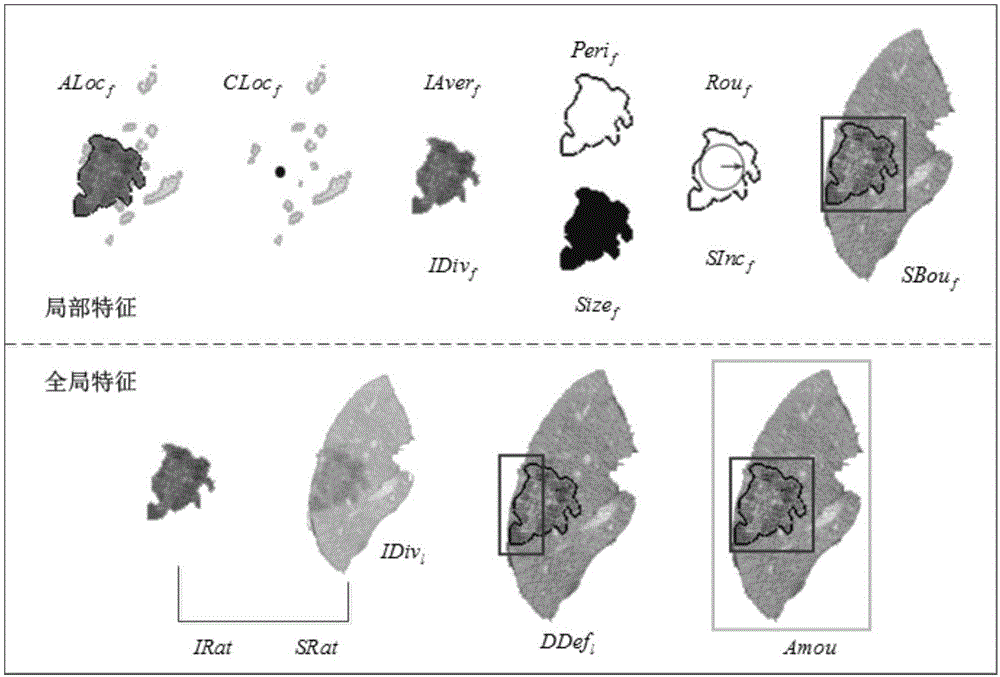Three-way-decision-based liver tumor CT image classification method
A CT image, liver tumor technology, applied in the field of computer-aided medicine, can solve the problems of misclassification, inability to early warning of benign tumors, inability to obtain high classification accuracy, etc.
- Summary
- Abstract
- Description
- Claims
- Application Information
AI Technical Summary
Problems solved by technology
Method used
Image
Examples
Embodiment 1
[0053] Refer to attached picture, in figure 1 A flow chart of the method of the present invention is provided in , and a group of embodiments are provided according to the flow chart of this diagram. This method first trains the classifier and labels 160 sets of liver CT image training samples, including 50 sets of liver cysts (benign), 50 sets of hepatic hemangiomas (benign) and 60 sets of hepatocellular carcinoma (malignant). The category attributes of the samples are divided into two categories: Class (benign / malignant). After image preprocessing and feature extraction, the sample forms a feature vector. On this basis, the attribute reduction method is used for rule extraction, and then a knowledge base is built to provide a basis for subsequent classification and diagnosis of new cases.
[0054] Image preprocessing includes extracting liver regions, liver vessels, and liver tumors. exist figure 2 In the example shown, the figure 2 (a) is a piece of original abdominal...
PUM
 Login to View More
Login to View More Abstract
Description
Claims
Application Information
 Login to View More
Login to View More - R&D
- Intellectual Property
- Life Sciences
- Materials
- Tech Scout
- Unparalleled Data Quality
- Higher Quality Content
- 60% Fewer Hallucinations
Browse by: Latest US Patents, China's latest patents, Technical Efficacy Thesaurus, Application Domain, Technology Topic, Popular Technical Reports.
© 2025 PatSnap. All rights reserved.Legal|Privacy policy|Modern Slavery Act Transparency Statement|Sitemap|About US| Contact US: help@patsnap.com



